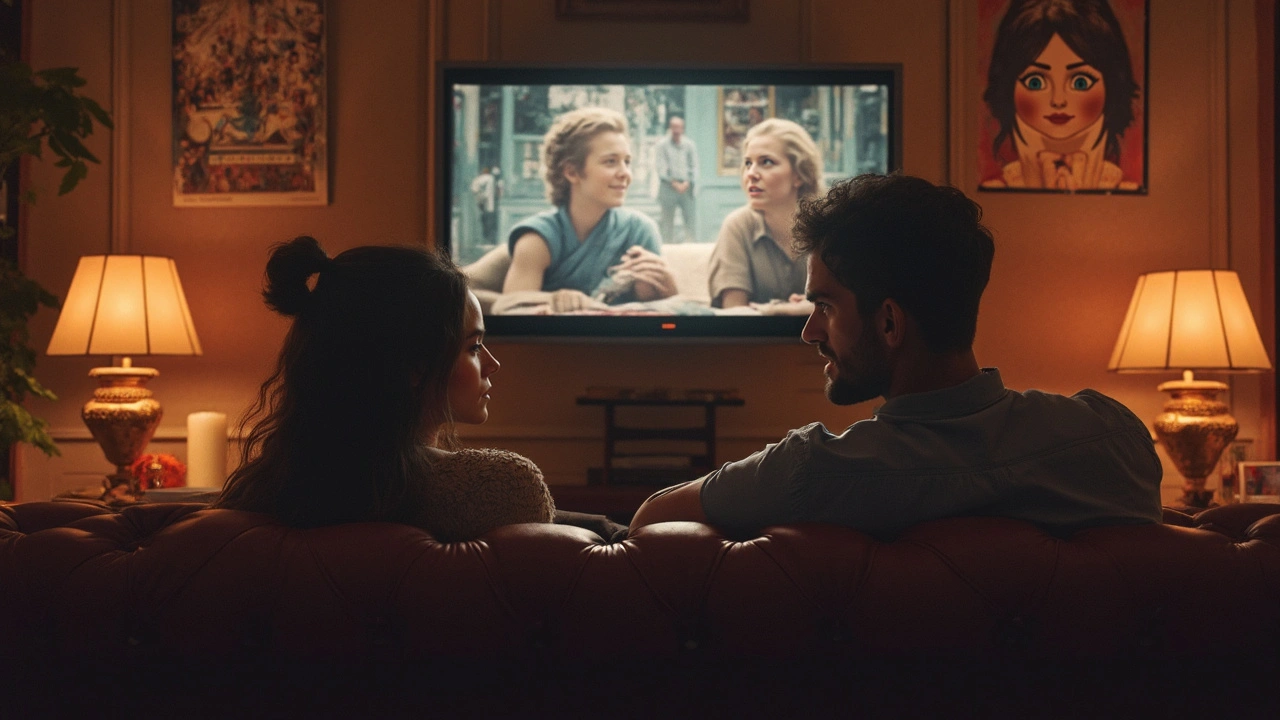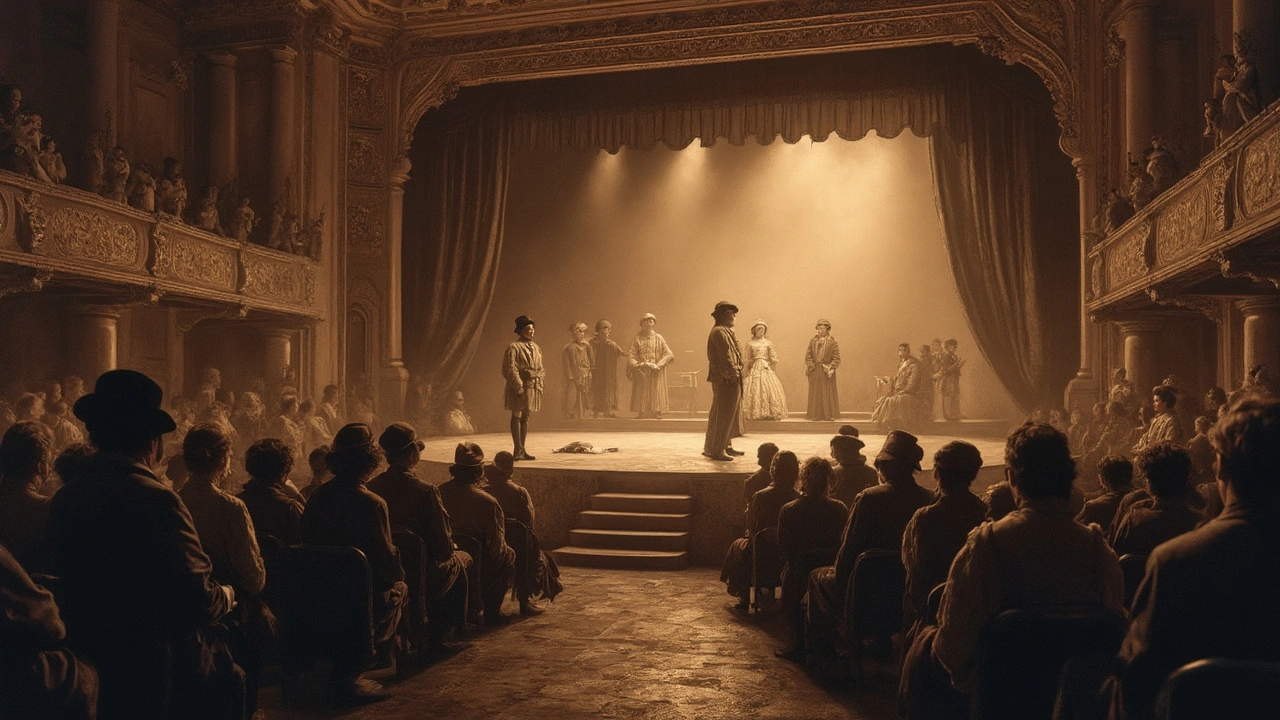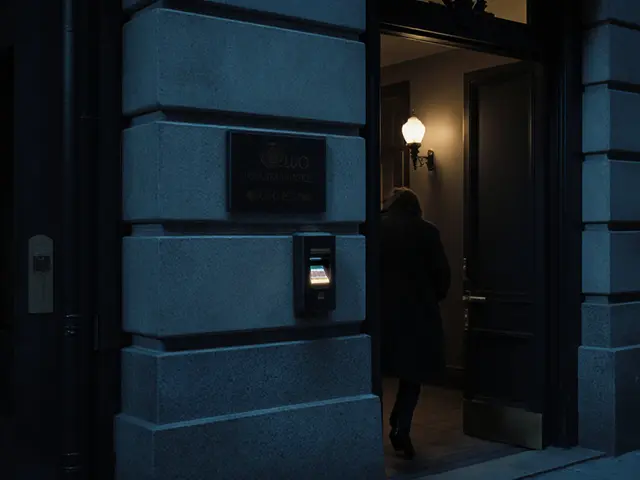Bondage is no longer hiding in the shadows; it's right there in the movies, TV shows, and even music videos we're consuming every day. Thanks to pop culture, what was once taboo is now gaining some mainstream recognition. But what does this mean for how we perceive these practices in real life?
First things first, let's talk about how shows and films like 'Fifty Shades of Grey' have thrust BDSM into the limelight. Love it or hate it, that series made a whole lot of people curious about bedroom dynamics they might not have considered before. But here's the catch: while it's great that these conversations are happening, pop culture doesn't always get it right. Often, what we see on screen is dramatized or even inaccurate, which can lead to some real misunderstandings out there.
So, how do we separate fact from fiction? It's all about digging deeper and maybe even talking to people who practice BDSM to get a clearer picture. The key is staying informed and open-minded. And hey, who knows, maybe a more accurate portrayal might pop up in the next big hit show. Until then, let's keep our eyes open and discussions going.
- The Rise of Bondage in Mainstream Media
- How Pop Culture Shapes Our Views on BDSM
- Challenges and Misconceptions
- Embracing a Healthy Perspective
The Rise of Bondage in Mainstream Media
It might come as a surprise, but bondage has been creeping its way into mainstream media for a while now. Remember when 'Fifty Shades of Grey' hit bookstores and later the big screen? It wasn't just an overnight sensation but a cultural phenomenon. This series led to a lot more than just book sales; it sparked debates, discussions, and curiosity about BDSM like never before. People who never thought about it started exploring these themes both fictionally and personally.
But why did this happen now? If you look back, you notice that movies and TV shows have always pushed the envelope. Over time, themes that were once too bold for public consumption found their way into scripts, slowly normalized through continuous exposure. Think of it like a drip-feed; little by little, audiences grew more comfortable, paving the way for more explicit content.
The Hollywood Effect
Hollywood, with its massive global reach, plays a huge role in how bondage is perceived. Films like 'Secretary' from 2002 and even certain music videos began introducing elements of bondage long before Christian Grey made his appearance. Although these earlier portrayals didn't cause waves as big as 'Fifty Shades,' they set the stage for future mainstream acceptance.
Interestingly, these portrayals, even if dramatized, have contributed significantly to discussions around consent, safety, and trust—an unexpected yet important takeaway. Media often glosses over these integral aspects, showing more ropes and less of the ground rules. However, it has prompted viewers to seek out accurate information, which is a win.
The Influence Stats
Good data can be hard to find, but some reports suggest a spike in sales for adult toys and bondage gear correlating with major film releases that feature BDSM themes. Here's a simpler way to consider this: the more exposure bondage gets, the more people are willing to experiment. The curiosity often translates into action, whether it's attending workshops or adding a bit of spice at home.
| Year | Movie/Show | Impact |
|---|---|---|
| 2002 | Secretary | Introduced BDSM themes to indie movie lovers |
| 2011 | Fifty Shades of Grey (book release) | Huge spike in BDSM conversations and interest |
| 2015 | Fifty Shades of Grey (film release) | Massive influence on mainstream acceptance |
What's next for the portrayal of bondage? With audiences increasingly open to diverse narratives, we might see an even more nuanced look at these practices in upcoming media. One thing's clear: bondage is here to stay in pop culture, and it's influencing us in ways we might not even realize.
How Pop Culture Shapes Our Views on BDSM
Pop culture is a massive influencer, especially when it comes to shaping our ideas about bondage and BDSM. Whether it's the dark and mysterious allure showcased in series like 'Fifty Shades of Grey' or more nuanced depictions in shows like 'Billions,' where characters like Chuck Rhoades explore these dynamics in their personal lives, what we see on screen often influences how we perceive real-world practices.
But here's the tricky part: Pop culture isn't always accurate. Many movies and TV shows emphasize sensationalism for entertainment value rather than factual accuracy. This can lead to skewed perceptions, where people might think that BDSM is all about power and control in unhealthy ways, when it's actually about mutual consent, trust, and communication.
Breaking Stereotypes
Strong female characters like Harley Quinn in 'Birds of Prey' or dominatrix roles in series like 'Sense8' are starting to shift the narrative. They're breaking away from the old-school damsel in distress trope, showing that engaging in BDSM doesn't mean giving up control or being weak. It's a consensual dynamic involving respect and boundaries.
Still, there's plenty of work to be done in depicting BDSM accurately. Writers and producers have a responsibility to portray these elements with care, making sure they consult real practitioners when crafting their stories. When done right, these stories can open up healthy dialogues and understanding.
What Are We Learning?
A study published by the Journal of Sex Research in 2022 found that exposure to BDSM content in pop culture can lead to increased curiosity and reduced stigma among viewers. However, it also emphasized the need for more accurate portrayals to prevent misconceptions. It's interesting to note that 45% of people surveyed admitted that their first encounter with BDSM ideas started with something they saw on screen.
Ultimately, it comes down to people digging a little deeper and doing their own research when they're curious about BDSM—pop culture can be a decent intro, but it shouldn't be the final say in understanding these complex dynamics. Exploring real stories or even documentaries that handle BDSM realistically can offer more grounded insights.

Challenges and Misconceptions
When it comes to bondage and BDSM in pop culture, it's not all smooth sailing. There's a fair share of misunderstandings out there, largely thanks to how it's often portrayed on screen. These misconceptions can lead to challenges for people genuinely interested in exploring these practices. So, let's set the record straight.
Misrepresentation in Media
One of the biggest hurdles is the way bondage is often depicted as dangerous or always extreme. Movies and shows tend to focus on dramatic scenes, making it seem like BDSM is always about pain or control, which isn't the whole truth. In reality, it's more about consent and mutual enjoyment, and safety is a top priority for those who practice it.
Consent and Communication
Another misconception is that BDSM activities happen without clear communication. In pop culture, you often don't see the important conversations that happen beforehand, which can give the wrong impression. In real-life BDSM, talking about limits and safe words is crucial. Nothing happens without both parties being fully onboard, and this aspect of consent is non-negotiable.
Stigma and Stereotypes
Because of how BDSM is shown, there's still a stigma attached to it. Many people assume it's a sign of troubled relationships or issues related to power. However, for many, it’s simply a different way to express intimacy and trust. It's important to remember that not everyone who engages in BDSM is living a double life full of dark secrets.
There's even a misconception that pop culture reflects real-life experiences accurately. To tackle this, it's helpful to look beyond mainstream media and learn from diverse voices within the BDSM community. Their insights often offer a more nuanced, real-world perspective that can be quite enlightening.
Embracing a Healthy Perspective
Let's face it: navigating the world of bondage and BDSM can feel a bit like learning a new language. With pop culture's lens often distorting reality, it's easy to misunderstand what these practices are really about. Creating a healthy perspective starts with education and open dialogue.
Education is Key
No matter how flashy a movie scene might be, real-life bondage is rooted in trust, communication, and consent. Forget the scripts; understanding the foundational rules is what's going to keep things safe and consensual. Ever heard of the term SSC? It stands for Safe, Sane, and Consensual – and it's basically the golden rule of BDSM.
So, here's a thought: why not dive into some reputable resources? Books, workshops, and online communities can provide insights and tips that you won't get from Netflix. Plus, connecting with people who practice BDSM can bust myths and provide real-world perspectives.
Understanding Consent and Communication
One solid fact: communication is at the heart of any BDSM practice. Before even thinking about trying any bondage, partners need to have a serious and honest chat. What are each person's boundaries? What are the hard no's or things they're curious about?
Many people use safe words as a tool to ensure boundaries aren't crossed. If you've watched it in movies and it looked dramatic, in reality, it’s actually just smart and part of keeping everyone comfortable and secure.
Breaking Down Misconceptions
Ever hear that bondage is abusive or demeaning? It's a common misconception. The truth is, when practiced responsibly, BDSM can enhance intimacy and bring partners closer. It's always about choice, respect, and pleasure for all involved.
To sum it up, developing a healthy view of bondage in the wake of pop culture's influence isn't about shying away but diving headfirst into understanding. The more we learn, the better we can appreciate the nuances and enjoy safer, more enjoyable experiences.
Ultimately, whether you're a curious newcomer or a seasoned practitioner, the journey should be fun, enlightening, and above all—consensual.




